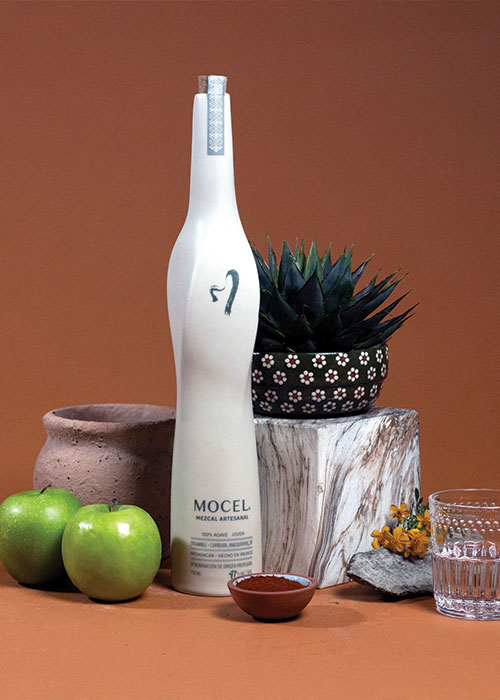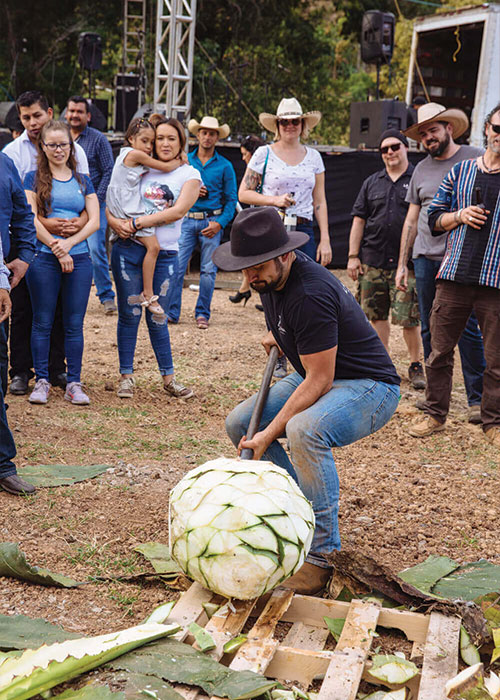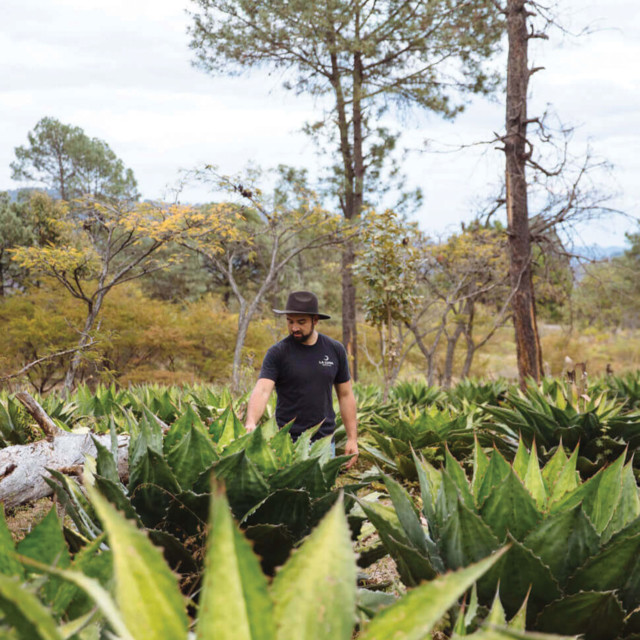The child of farmworkers in Yakima, Wash., Rosalinda Mendoza often visited her family back in Michoacán, Mexico, where she saw the importance of the region’s mezcal. Her grandmother even used it for medicinal purposes, rubbing it on her chest or back when she had a cold. As Mendoza and her sister Elizabeth grew up and started bringing their favorite bottles back to Washington, they became frustrated at the lack of mezcal from Michoacán in the U.S., inspiring the pair to start Mocel Mezcal. Launched in March, Mocel focuses on the state’s traditional artisanal production using local agaves. But some of the same things that make Michoacán’s mezcal special also make it difficult to bottle, certify, import, and sell the drink in the U.S.
The U.S. imports the overwhelming majority of Mexico’s mezcal, and as of 2020, almost 93 percent of certified mezcal — a designation necessary for export — came from Oaxaca. Production from the other eight, now nine, states within the designation of origin combined for the rest, with Michoacán averaging less than 1 percent from 2016 to 2019. Oaxaca dominates in not only production and sales, but in image. “When people think about mezcal, they think about Oaxaca,” says Monica Favila, who leads mezcal tours in Mexico City.

Mocel and others from Michoacán hope to change that by highlighting the unique flavor of their region’s style — Mezcal from Michoacán tends to be noticeably less smoky than its Oaxacan counterparts. Salvador Chávez, the founder of La Luna, one of the only other brands devoted entirely to exporting Michoacán mezcal to the U.S., sums up the region’s mezcals as having a lot of salinity, a “cheesy funk,” and some grassy or piney notes.
“Mezcal is very similar to wine,” explains Omar Trejo, who owns Mis Mezcales, a mezcal shop in Mexico City. “You want to try wines from different places,” he says, noting how each location imparts its own culture, flavor, and methods on the final product. Mezcal draws much of the flavor from the agave used, but many drinkers are familiar only with Oaxacan mezcal, which overwhelmingly comes from espadin (as does 90 percent of all mezcal). “Cupreata is our espadin,” explains Chávez, “in that it is the most common and ubiquitous. The dominance of Oaxaca mezcal did not necessarily help us.”
Cupreata grows only on the high hillsides along the Balsas River that marks the border of Michoacán and Guerrero, which makes it challenging to harvest in its short season and impossible to do so once the rains begin around June. Meanwhile, Oaxacan harvesting seasons have stretched to take place nearly year-round as production grows. Trejo calls another Michoacán agave, inaequidens, “the region’s star.” But it takes 15 years to reach maturity, about twice as long as the average espadin, and has much less sugar, thus requiring more agave to make the same amount of mezcal.
The traditional artisanal methods that both La Luna and Mocel focus on also take more time. Most of the vinatas — agave estates — in Michoacán are simply people’s backyards or family land. As a kid, Chávez’s family would routinely make the three-day drive down from California to his parents’ hometown in northwest Michoacán. Now, he makes mezcal on two vinatas, one about 100 yards from where his father was born.

And the techniques Chávez uses haven’t changed from when his father was born there: It takes La Luna 45 days from putting the agave in the ground until bottling, a period that includes five days of cooking the agave underground and 10 days of open-air fermenting with wild yeast, another aspect of the process that gives Chávez’s mezcals Michoacán-specific flavors. But the heart of Michoacán’s unique tradition comes from the wooden stills (as opposed to the copper and clay pot ones in Oaxaca), which create internal condensation, so the mezcal is collected hot. “It’s 2022 and we’re producing mezcal as if it’s the 1800s,” says Chávez.
Mocel went to Michoacán looking for the best-tasting mezcal, but only among producers committed to using these 400-year-old methods. There are a lot of mezcal producers within the state, though few produce for export. Some of that is related to price — it’s expensive to get certified — and some is politics: The certifying body is in Oaxaca, and Trejo says that disputes about mezcal traditions in Michoacán meant it took Michoacán until 2012 to be certified as a mezcal-producing state. The Mendozas did blind taste tests of local bottles until they narrowed down to their favorites. They ended up choosing a cooperative of farmers, in part because of its commitment to traditional production, and worked to get them certified, a surprisingly challenging feat. In Oaxaca, systems and consultants help investors and companies find producers, get certification, and bottle for export. “In Michoacán, you’re doing everything yourself,” says Mendoza.
It’s no surprise that the current market for Michoacán mezcal remains small. Chávez says he’s just seeing geekier consumers trickle northward as they tour and taste mezcal, and while many large mezcal companies make one or two expressions from the state, only a few focus solely on exportable Michoacán mezcal: La Luna, Mocel, and Don Mateo de la Sierra.
That makes economics Mocel’s biggest challenge. “Bartenders want artisanal mezcal that benefits the family that makes it, but they don’t want to pay more than $50. That’s a contradiction.” With the three-tier system in the U.S. (importer, distributor, retailer), Mendoza says that consumers are unknowingly asking her to “screw the mezcalero family over.” As the children of farmworkers, she and her sister saw early on what it takes to cultivate and grow “real food and drink,” and educating consumers on what they pay for is part of their current challenge at Mocel: Cheap mezcal from Michoacán would ultimately require labor exploitation.
“Mezcal from Oaxaca is really good,” Mendoza says. “For us, we also want to show you this other beautiful mezcal that maybe you haven’t experienced.” She and her sister see Michoacán’s mezcal as a way to help people appreciate the diversity that exists within Mexico, something often flattened when taken out of country or context — and something they saw even beyond the mezcal itself as they prepared to launch. On the original bottle, their designer used Aztec patterns — but unlike much of the country, Michoacán was never conquered by the Aztecs. Chávez and Mendoza hope to use their products to make sure that their state’s mezcal industry isn’t conquered, either, as they build a reputation for Michoacán’s adherence to traditional methods and add nuance to the conversation about mezcal, especially outside of Mexico.
